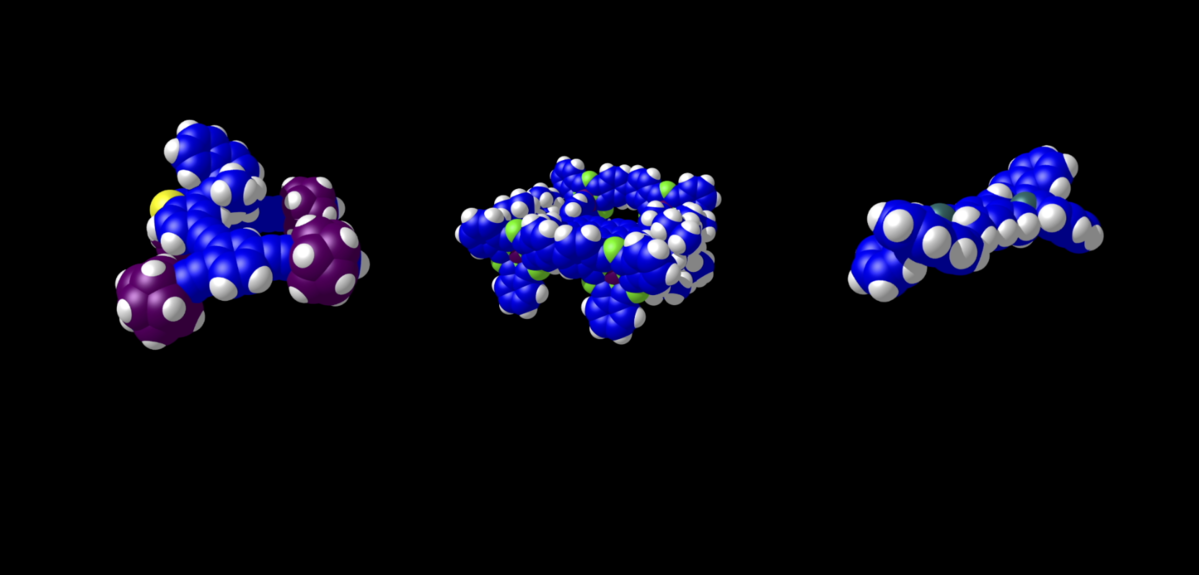You are here
NanoCar Race
For the past few months, a new type of science is being done in the underground clean rooms of the CEMES laboratory of Toulouse. À différent breed of researchers has been flocking to this city in the South of France from all around the world. They are training for an unprecedented competition at the crossroads of Physics and motor sports. Welcome to the Nano Car Race. Franck Eisenhut will be driving the German nano car developed by his team from the University of Dresden. He will be competing against other nano cars during the international race in the Fall of 2016. No steering wheel or gas pedal in Frank’s cockpit, only the computers he uses to control the world’s tiniest racing car…
Frank Eisenhut
What you can see here firstly is a gold surface ; on this gold surface you see some higher parts, and these are molecules on the surface. What we are going to try to do now is move this molecule assemblies in a certain direction and this is what I am trying to do…
The race will be invisible to the naked eye - the vehicles are a million times smaller than a millimeter. (In order) to see them, the researchers use a device called a scanning tunneling microscope or STM. The spécificité microscope used here in Toulouse is one of the few STMs in the world with several separate scanning tips that will allow four drivers to compete at the same time.
ITV CHRISTIAN (24s)
The tunnelling microscope works like this: you have a small tip which you slowly move towards a surface, here it’s my hand. You maintain a small voltage difference between the tip and the surface. As you move it closer, at one point, when the tip is very near the surface, less than a nanometer, a tiny current will appear between the point and the surface.
The tip of the microscope scans and analyses a given surface and gradually renders an image on the control screens. But not only does it read what’s on the surface, it also transfers electrons that can then stimulate to the NanoCars, driving them along the track. These racing conditions are particularly hostile : the track is maintained at minus 270 degrees celsius and at this infinitely small scale, the laws of physics are drastically different from those we encounter in our macroscopic world. No need to use a special tarmac for grip - these researchers use a race track made of gold…
ITV CHRISTIAN (26s)
This is the small gold chip which will be used for the race. It will be set inside the ultrahigh vacuum, before we place the molecules on it. We chose gold because when its surface is well polished and prepared, you get paths that are not very high, and can guide the cars. Here you see the roads or tracks which occur when you prepare the surface.
The molecule-vehicles of each team are evaporated onto the surface and end up scattered randomly on the gold racetrack. Each driver is then free to choose which one to move by targeting it with the tip of the microscope. He can then hope to send it racing at 5 nm an hour - the idea is to cover the longest distance during the 38-hour race this fall. All without destroying these these delicate machines.
ITV Frank Eisenhut
We are all quite excited about it ; first to be on such a competition, to work on such a machine, it’s quite unique in the world. It’s not like driving fast cars. It’s not like Adrenaline, being patient every second ; it’s more like a video game maybe ; it needs a certain time to see your molecule. And this is the exciting time. You see, is something changed ? And after three minutes, you see what happened, if you have destroyed it, if it moved, if it rotates, or if it is just at the same position as before.
For this competition to even be feasible, each participating team had to develop its own racing molecule. The NanoCars are built using around one hundred atoms or less ; and their design are key to the race strategy. A windmill shape for the german team, a dragster for the Americans. The NanoCars on the lineup all have their own specific features.
Gwenaël Rapenne, the chemist working for the French team, imagined and then produced their competing molecule. Its shape is inspired by the chassis of an ordinary car.
ITV GWENAEL (53s)
The NanoCar competing for the Toulouse team is in fact quite big. It might be one of the biggest in the race. What’s special about it, is that it is very stiff. The only things that can move are the wheels. So, we have 4 wheels, just like the cars we are familiar with in our macroscopic world – so these Rs symbolize the wheels – they are molecules with three blades. We can easily imagine these wheels will start to turn on the surface, as the molecule is stimulated by electrons from the tunnelling microscope.
Each person will be able to control the flux of electrons directed towards their molecule and the position of the tip on the surface. This is going to be a level playing field, as we will all be on the same surface, at the same time and same temperature, with the same tool and the same fuel: electrons. So it will be the NanoCar’s intrinsic features which will determine if it wins or not.
These upcoming months, all teams will work on a warm up lap in real racing conditions. They will get to familiarize themselves with the scanning tunneling microscope as well as the behavior of their specific molecules.
This fall, all 4 nanoCars will be on the starting grid of the racetrack with a day and a half of racing ahead of them. The organizers have not yet confirmed if the winning team will be handed a nano-trophy on the podium.
The training sessions
In order to get a shot of winning, the teams and their drivers will take turns in the upcoming months for training in real conditions. They will gain knowledge about scanning tunneling microscopy, and show Science in a rare light of an international contest.
The green light
To win, the teams and their drivers will be taking turns in the next few months for training sessions in real conditions. The race will develop knowledge about tunnelling microscopy and give science the opportunity to look like an international competition.
The suspense will be over in the autumn of 2016 on the finish line of what the researchers have already named the 38 Hours of Toulouse.
Have not yet confirmed if there will be a nano cup for the winning team…
NanoCar Race
Molecules on the start line
With the participation of
Center for Material Elaboration & Structural Studies
Technical University of Dresden
Direction, Images and Editing
Editor
Mixing
Production
Music
with the kind permission of the Cézame Music Agency – All rights reserved
The NanoCar Race is supported by
The Smallest Car Race in the World
The first-ever international race of molecule-cars will take place at the CEMES laboratory in Toulouse this fall. Five teams are fine-tuning their cars—each made up of around a hundred atoms and measuring a few nanometers in length. They will be propelled by an electric current on a gold atom "race track." We take you behind the scenes to see how these researcher-racers are preparing for the NanoCar Race.
Centre d'Elaboration des Matériaux et d'Etudes Structurales
(CEMES/CNRS)
Gwénaël Rapenne
(CEMES/CNRS)
Corentin Durand
(CEMES/CNRS)
Pierre Abeilhou
(CEMES/CNRS)
Frank Eisenhut
Technical University of Dresde
Official websites of the competition:





